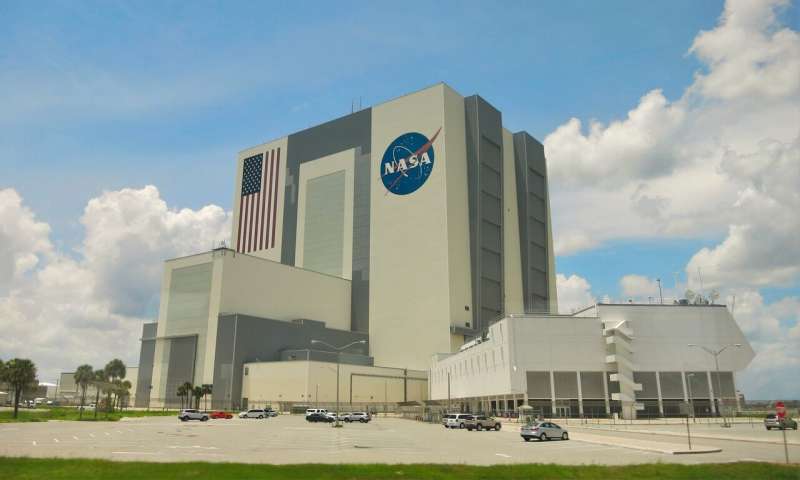The South Pole-Aitken basin represents one of the most significant geological features on the Moon, being the largest and oldest visible crater. Dating back approximately 4 billion years, this massive geological wound maintains secrets about the Moon's early history akin to a colossal lunar time capsule.

A topographic model of the Moon using a color-scale from purple (low) to red (high) based on data collected by NASA's Lunar Reconnaissance Orbiter and Kaguya by the Japanese Space Agency. This model globally outlines the entirety of the South Pole-Aitken basin (SPA). Credit: Hannes Bernhardt
Historical Context and Significance
The South Pole-Aitken basin is of monumental significance in lunar science, primarily due to its size, impact history, and the mysteries it holds regarding the Moon's geological evolution. For decades, scientists assumed the basin had a primarily elliptical shape, theorizing a shallow angle impact that dispersed minimal debris across the lunar surface.
This theory posited that an object struck the Moon at a shallow angle, likening the event to a rock skipping on water. Such a model suggested minimal disruption to the surrounding area, yet a recent study led by researchers at the University of Maryland has challenged this long-held belief.
The New Study's Findings
As detailed in a recent publication in Earth and Planetary Science Letters, this groundbreaking research utilizes high-resolution data amassed from NASA's Lunar Reconnaissance Orbiter. Hannes Bernhardt, the study's lead author, elucidates the team's methodical approach in challenging existing assumptions about the basin's impact history.
Methodology
Over 200 mountain formations surrounding the basin were identified and analyzed for their shapes and distributions. This investigation revealed significant insights leading to a reconsideration of the impact angle that initially formed the basin.
| Aspect | Previous Understanding | New Findings |
|---|---|---|
| Impact Angle | Shallow, elliptical | More vertical, round shape |
| Debris Distribution | Minimal dispersion | Significant dispersal expected |
| Geological Insights | Lunar surface features less studied | New areas for future exploration identified |
The implications of these findings are profound, suggesting that the South Pole-Aitken basin may contain materials from deep within the Moon's mantle or crust—resources that have historically evaded direct access.
Implications for Future Lunar Missions
With esteemed NASA missions such as Artemis aimed at reestablishing human presence on the Moon, understanding the geological history and structure of features like the South Pole-Aitken basin is more crucial than ever. The newfound knowledge about the basin not only alters the trajectory of lunar exploration but also enhances our understanding of the Moon's formation in relation to Earth and other celestial bodies.
Potential Resources and Research Areas
- Access to Ancient Materials: The expected distribution of impact debris suggests that lunar explorers may come across untouched geological specimens from the Moon's early formation.
- Uncovering the Moon's Origin: The materials gathered could refine current theories regarding the Moon's birth following a massive collision with a planet-sized object.
- Geological History: Insights into the Moon's mantle could potentially elucidate the geological events underpinning its development and transformation throughout the solar system's history.
Benefits of High-Resolution Lunar Data
The revelations presented in this study are a testament to the critical role of high-resolution data. The Lunar Reconnaissance Orbiter has been instrumental in mapping the Moon's surface with unprecedented precision, revealing geological features, compositions, and structures that were previously opaque to the scientific community.
| Satellite | Purpose | Key Findings |
|---|---|---|
| Nasa's Lunar Reconnaissance Orbiter | Mapping lunar surface features | Identification of topological features around South Pole-Aitken basin |
| Japanese Kaguya | Geological surveys | High-resolution imaging of lunar surface materials |
| Chandrayaan-3 | Mineralogical assessment | Detection of minerals indicative of impact debris |
Conclusion: Mapping the Future of Lunar Exploration
The evolving narrative surrounding the South Pole-Aitken basin and its composition continues to redefine our approaches to lunar research and exploration. With opportunities for lunar astronauts to access ancient geological materials, future missions stand to benefit significantly from the insights gathered by Bernhardt's team.
In conclusion, the importance of ongoing research into the Moon's archaeological narrative cannot be overstated. Understanding the Moon's past will illuminate its role as a key player in the history of our solar system, and support the ambitious aims of upcoming lunar missions.
For More Information
For a deeper dive into this topic and access to related studies, visit:
- Phys.org on South Pole-Aitken basin
- Science Magazine: South Pole-Aitken Basin Research
- Earth and Planetary Science Letters
Highlighted in this research is the dual role of scientific inquiry: inspiring future exploration while also serving as a portal into our cosmic past—truly a testament to the profound interconnectedness of celestial and terrestrial histories.
This article is based on research published by Hannes Bernhardt et al.
Source: University of Maryland and Science X Network.
To learn more about the integrity and accuracy of this content, check out the editorial process followed by Science X Network.



